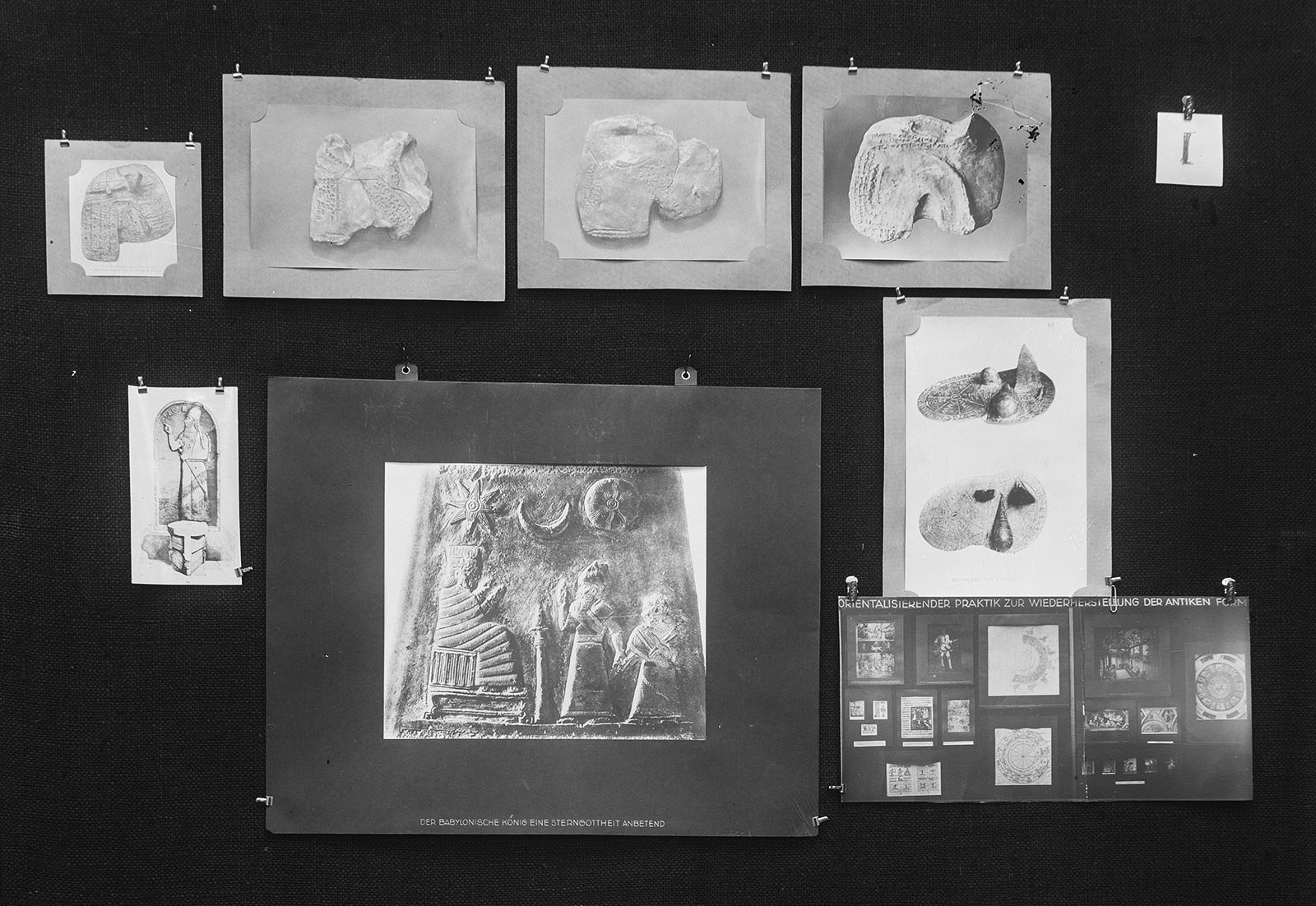How to read the liver of a sheep

A text that has particularly informed how I arrived at my focus on Magic & Science as a choreographic orientation is Georges Didi-Huberman’s Visceral, Sidereal or How to Read the Liver of a Sheep, a section of his book Atlas, or the anxious gay science (2018). In this writing, Didi-Huberman addresses the references to ancient Babylonian divinatory practices that appear in the first Plate (Plate 1) of Aby Warburg’s Mnemosyne Atlas.
Across the top of this starting panel of Warburg’s ambitious Atlas of Western art and culture, the first thing to appear is a row of five photographs of ancient Babylonian or Etruscan objects, each representing a sheep’s liver and used in the practice of extispicy: divination through viscera. These objects, accurately shaped with the anatomical features of livers and inscribed with markings delineating various zones, were used to enable the reading of divinatory clues from an attentive examination and intuitive interpretation of actual organic entrails (Didi-Huberman 2018, p.18-19). Didi-Huberman considers these objects and their prominent placement in the Atlas ‘strategically chosen’ by Warburg, arguing that they:
…are neither insignificant nor simple objects. Their complexity has to do with their function as dialectical images: images destined to edit and piece together those heterogeneous spaces of the visceral folds, on the one hand, and the celestial sphere, on the other. Warburg dedicated a considerable part of his research to questions of astrology: Is not reading the movements of time in visual configurations - like the constellations of the stars - a fundamental paradigm for all knowledge that seeks to extract the intelligible from the sensible? (2018, p.17)
The embodied context of choreography, too, can be seen in the light of this paradigm in which the intelligible arises from and within the sensible (although I argue that choreography seeks to notice, generate or propagate – rather than extract – the intelligible). In this elucidation of how to read the liver of a sheep, Didi-Huberman articulates a form of reading whose relevance to choreographic knowledge-generation lies in being at once visceral-organic-bodily and divinatory-intuitive-imaginative. Invoking Walter Benjamin’s words, Didi-Huberman affirms that this is a type of knowledge-practice through which it becomes possible ‘to read what was never written’ (2018, p.13). Indeed, Didi-Huberman also invokes Benjamin here as specifically affirming that ‘“reading, before all language”… occurs in the “entrails, in the stars, or dances”’ (ibid). Here, in Plate 1 of Warburg’s Atlas, is a form of reading and knowing that unfurls in the non-verbal and bodily dimensions that I consider foregrounded in choreographic practice.
READ MORE in Section 6 of my written thesis on ‘To read what was never written’: Didi-Huberman on Warburg’s Mnemosyne Atlas